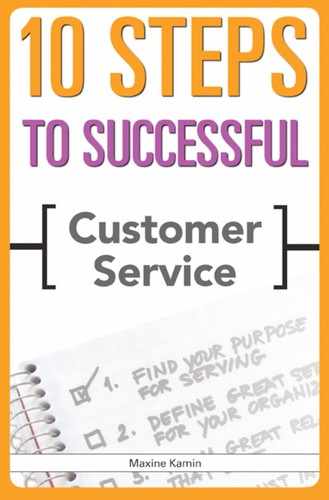| Financial |
- Enough resources are provided to serve the customer,
including staff, merchandise, food, and space.
- Costs to the customer are competitive; lower costs are
explored and implemented.
- Financial rewards are given for customer satisfaction,
including bonuses, trips, use of company vehicles, tickets
to events, music, books, gift certificates, and special
activities.
- All staff members are empowered with a certain amount of
money they can use to “recover” or do something special
for customers.
- Employees are compensated fairly with salaries and
benefits.
- The company maintains effective financial controls and
stays within budget.
- Employees recommend ways to save money and to
innovate.
|
Customer
Focus |
- Leaders practice the courage of conviction and a profound
customer focus.
- Practices put at least as much attention on internal
customers as they do on external customers.
- Decisions are based on making a difference to the
customer.
- Customer needs and behaviors are examined, monitored,
and reported in a variety of ways and methods.
|
| |
- As much attention is paid to customer satisfaction and
loyalty as to financial measures.
- Employees are hired for their passion about customers.
- Conflicts are addressed internally and externally.
- Company perception is addressed.
- Employees are asked about their opinions of service on a
regular basis.
|
| |
- Teams invent ways that customers can experience new and
different experiences.
- Everyone in the organization takes personal responsibility
for providing an excellent customer experience.
- Leaders act as role models.
- Customer service triumphs are celebrated.
|
Growth
and
Learning |
- Staff members are given information about the company,
how it operates, and how all processes fit together to
produce results for customers.
- All staff is equipped with the training, tools, and skills
needed to create customer loyalty.
- Research is conducted, including interviewing leading
subject matter customer service experts and reviewing
articles, books, white papers, and best practices by other
companies.
|
| |
- Team learning is essential. Members know how to
cross-function with their team and with others in the
organization. Opportunities exist to cross-train in a variety
of ways with different departments.
- Supervisors, managers, directors, and executives take
advantage of learning opportunities to hone skills
in leading, motivating, providing recognition, and
contributing to process improvement.
|
| |
- The company recruits and hires people who are
committed to customer service.
- Developing employees is a priority.
- Strengths are emphasized.
- Gaps in skills are addressed through training and
development.
- Coaching and mentoring take place at all levels.
|
Business
Processes
and
Technology |
- Technology is easy for internal and external customers to
use.
- Websites, blogs, and electronic information are easy to
read, easy to access, and clear.
- Online ordering is simple.
- There are several quick ways to reach company
representatives.
|
| |
- Processes are customer focused.
- Policies and procedures are customer friendly, such as
return policies, discounts, and refunds.
- Technology is constantly improved for internal and
external customer ease and use, and for relevance.
|
| |
- Metrics measure the right things.
- Future needs are explored regularly and are part of the
planning process.
- Employees provide input on what is necessary to
optimize work and production.
- What the company advertises, it delivers.
|
